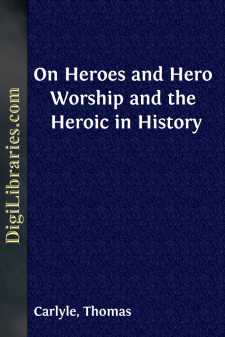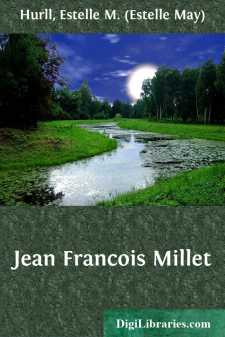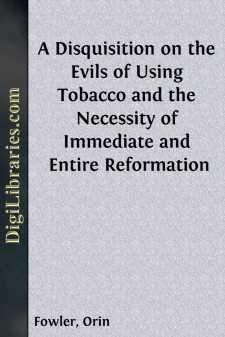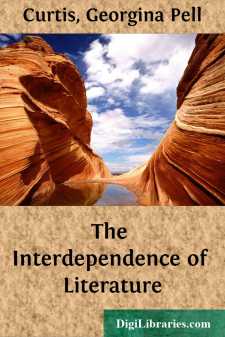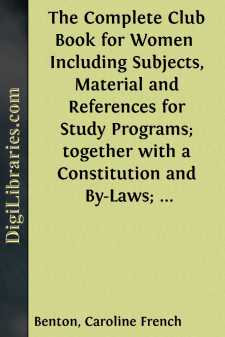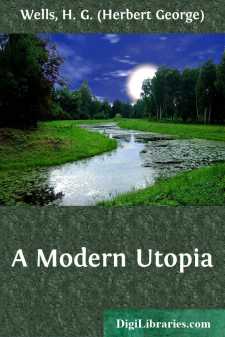Non-Classifiable
- Non-Classifiable 1768
Non-Classifiable Books
Sort by:
by:
Thomas Carlyle
LECTURES ON HEROES. LECTURE I. THE HERO AS DIVINITY. ODIN. PAGANISM: SCANDINAVIAN MYTHOLOGY. [May 5, 1840.] We have undertaken to discourse here for a little on Great Men, their manner of appearance in our world's business, how they have shaped themselves in the world's history, what ideas men formed of them, what work they did;—on Heroes, namely, and on their reception and performance;...
more...
DETAILS OF TREATMENT. For forty-eight hours after admission to the hospital the patient is kept on ordinary diet, to determine the severity of his diabetes. Then he is starved, and no food allowed save whiskey and black coffee. The whiskey is given in the coffee: 1 ounce of whiskey every two hours, from 7 a.m. until 7 p.m. This furnishes roughly about 800 calories. The whiskey is not an essential part...
more...
by:
Walter Scott
Preface When I first saw Mr. Osgood's beautiful illustrated edition of The Lady of the Lake, I asked him to let me use some of the cuts in a cheaper annotated edition for school and household use; and the present volume is the result. The text of the poem has given me unexpected trouble. When I edited some of Gray's poems several years ago, I found that they had not been correctly printed for...
more...
by:
Anonymous
My Lord, Characters like your’s, are regarded with impartial Attention by human Society, and the World will impatiently expect something in your Conduct suitable to your Rank and Dignity. Those who are intrusted with the Charter of our Liberties, or the Revenge of our Wrongs, are laid under the strongest Obligations which Honour or Gratitude can impose, to maintain the Rights and execute the...
more...
INTRODUCTION I. ON MILLET'S CHARACTER AS AN ARTIST The distinctive features of Millet's art are so marked that the most inexperienced observer easily identifies his work. As a painter of rustic subjects, he is unlike any other artists who have entered the same field, even those who have taken his own themes. We get at the heart of the matter when we say that Millet derived his art directly...
more...
Hochelagans and Mohawks; A Link in Iroquois History. By W. D. Lighthall, M.A., F.R.S.L. (Presented by John Reade and read May 26, 1899.) The exact origin and first history of the race whose energy so stunted the growth of early Canada and made the cause of France in America impossible, have long been wrapped in mystery. In the days of the first white settlements the Iroquois are found leagued as the...
more...
by:
Orin Fowler
Among the evils which a vitiated appetite has fastened upon mankind, those that arise from the use of Tobacco hold a prominent place, and call loudly for reform. We pity the poor Chinese, who stupifies body and mind with opium, and the wretched Hindoo, who is under a similar slavery to his favorite plant, the Betel; but we present the humiliating spectacle of an enlightened and christian nation,...
more...
ANCIENT BABYLONIAN AND EARLY HEBREW. From the misty ages of bygone centuries to the present day there has been a gradual interlinking of the literatures of different countries. From the Orient to the Occident, from Europe to America, this slow weaving of the thoughts, tastes and beliefs of people of widely different races has been going on, and forms, indeed, a history by itself. The forerunner and...
more...
CHAPTER I Suggestions for Club Work There is no difficulty in starting a club; any group of women who are interested in the same things may form themselves into a simple organization. But the great question will surely arise: What shall we study? And here club members are certain to divide into three distinct classes. The first group consists of women who have for years been absorbed in home-making and...
more...
This book is in all probability the last of a series of writings, of which—disregarding certain earlier disconnected essays—my Anticipations was the beginning. Originally I intended Anticipations to be my sole digression from my art or trade (or what you will) of an imaginative writer. I wrote that book in order to clear up the muddle in my own mind about innumerable social and political questions,...
more...


